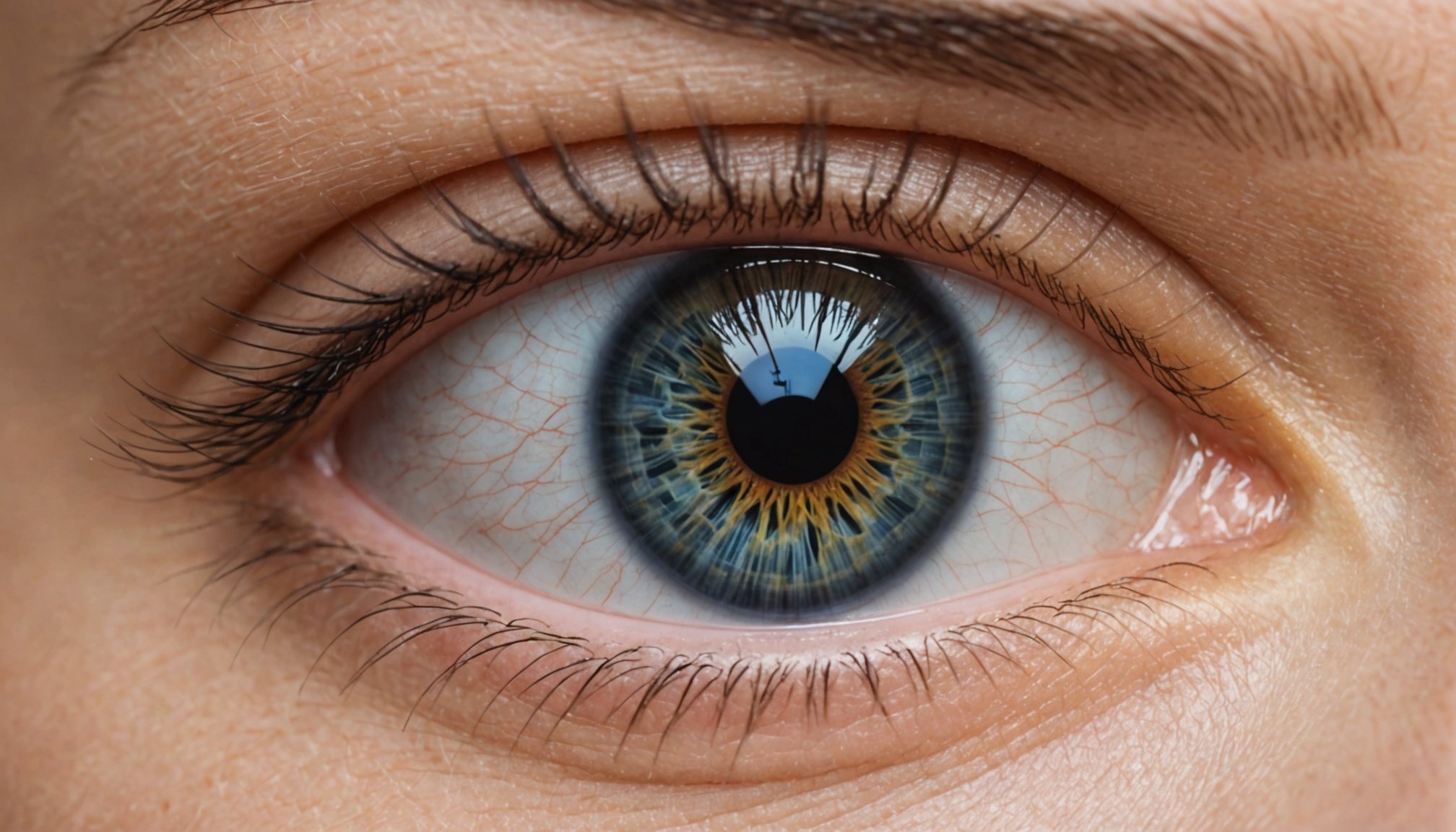Unlocking Vision: Innovative Contact Lens Solutions for UK Optometrists in Managing Keratoconus
Managing keratoconus, a progressive eye condition characterized by the thinning and conical shaping of the cornea, has long been a challenge for optometrists. However, recent innovations in contact lens technology are revolutionizing the way keratoconus is treated, offering new hope and improved vision for patients.
Understanding Keratoconus
Keratoconus is a condition that affects the cornea, the clear dome-shaped surface at the front of the eye. As the cornea thins and bulges, it can cause significant vision distortion, including blurred vision, double vision, and sensitivity to light. The condition often begins in the teenage years or early twenties and can progress over time, necessitating ongoing care and management.
In the same genre : Crafting Tailored Exercise Regimens: A Guide for UK Physiotherapists Working with Chronic Pain Patients
Innovative Contact Lens Solutions
Customized Contact Lenses for Keratoconus
One of the most significant advancements in managing keratoconus is the development of customized contact lenses. For instance, a recent launch by an optical company involves offering contact lenses in three design types depending on the severity of the keratoconus: mild, moderate, and advanced versions. This tailored approach ensures that each patient receives a lens that is specifically designed to address their unique needs[1].
- **Mild Keratoconus:**
- Designed for early stages of the condition
- Provides gentle correction and support
- Often used in conjunction with other treatments
- **Moderate Keratoconus:**
- For patients with more pronounced corneal thinning
- Offers enhanced stability and vision correction
- May require more frequent follow-ups
- **Advanced Keratoconus:**
- For severe cases where significant corneal distortion is present
- Provides maximum support and vision correction
- Often considered before surgical options
CooperVision’s clariti 1 day Multifocal 3 Add
CooperVision has also made significant strides in contact lens innovation with the launch of the clariti 1 day Multifocal 3 Add. This lens is designed to address presbyopia, a condition often associated with aging, but its technology also benefits patients with keratoconus by providing clear vision at all distances.
Also to discover : Revolutionizing Aligner Fabrication: A Guide for UK Orthodontists to Harness 3D Printing Technology
“We wanted to create a simple multifocal system for all stages of presbyopia that’s also easy to fit,” said CooperVision Director of Research Programs Percy Lazon de la Jara. “The dominant eye is kept at a low add, and the two lenses are designed to work together, so that with both eyes open and working together—how people actually use their eyes—visual quality is the best it can be”[2].
Enhanced Comfort and Ease of Use
One of the key challenges in managing keratoconus with contact lenses is ensuring patient comfort and ease of use. The new generation of contact lenses, such as those from CooperVision and Menicon, are designed with enhanced comfort features.
CooperVision’s Comfort Edge with WetLoc Technology
CooperVision’s clariti 1 day Multifocal 3 Add incorporates Comfort Edge with WetLoc Technology, which enhances the lens’s comfort and handling. This technology makes the lens highly suitable for new wearers, providing optimal vision and comfort from the outset. As Dr. Steve Rosinski, CooperVision Senior Manager, Professional Affairs, noted, “Everyone is a contact lens patient until proven otherwise,” highlighting the importance of presenting contact lenses as a viable option for all patients[2].
Menicon’s Miru 1day UpSide Multifocal
Menicon has also introduced the Miru 1day UpSide multifocal, a silicon-hydrogel daily disposable contact lens designed for presbyopic users but also beneficial for keratoconus patients. This lens features Menicon’s advanced material and Smart Touch technology, ensuring high comfort and ease of handling[4].
Practical Insights and Actionable Advice for Optometrists
Proactive Patient Care
Optometrists play a crucial role in managing keratoconus, and proactive patient care is essential. Here are some practical insights:
- Regular Follow-Ups: Regular follow-ups are critical to monitor the progression of keratoconus and adjust the treatment plan accordingly.
- Patient Education: Educating patients about the condition, its progression, and the available treatment options is vital. This includes explaining the benefits and potential drawbacks of different contact lenses.
- Collaboration with Other Specialists: In advanced cases, collaboration with ophthalmologists or other specialists may be necessary to consider surgical options or other treatments.
Fitting Guide and User-Friendly Resources
CooperVision’s fitting guide for the clariti 1 day Multifocal 3 Add is designed to be user-friendly, making it easier for practitioners to fit the lenses. Here are some tips for optometrists:
- Use the Fitting Guide: Utilize the provided fitting guide to ensure the correct lens is chosen for each patient.
- Consider Patient Lifestyle: When selecting a contact lens, consider the patient’s lifestyle and preferences to ensure the best fit.
- Follow-Up Care: Schedule follow-up appointments to ensure the lenses are comfortable and effective.
Table: Comparison of Innovative Contact Lenses for Keratoconus
| Contact Lens | Manufacturer | Key Features | Comfort Technology | Ease of Use |
|---|---|---|---|---|
| clariti 1 day Multifocal 3 Add | CooperVision | Binocular Progressive System, Comfort Edge with WetLoc Technology | Enhanced comfort, easy handling | High |
| Miru 1day UpSide Multifocal | Menicon | Silicon-hydrogel material, Smart Touch technology | High comfort, easy insertion/removal | High |
| Customized Keratoconus Lenses | Various | Tailored designs for mild, moderate, and advanced keratoconus | Varies by manufacturer | Varies |
Supporting Patient Care with Advanced Technology
Role of Artificial Intelligence
Artificial intelligence (AI) is increasingly being integrated into eye care, including the management of keratoconus. AI can help in diagnosing the condition earlier and more accurately, and in personalizing treatment plans.
Laser Eye Surgery and Other Surgical Options
For advanced cases of keratoconus, surgical options such as laser eye surgery or corneal implants may be necessary. For instance, the CAIRS procedure, adopted by My i-Clinic in London, is a minimally invasive treatment that has shown promising results in managing keratoconus[5].
Education and Training for Optometrists
Staying updated with the latest advancements in contact lens technology and treatment procedures is crucial for optometrists. Here are some ways to enhance education and training:
- Workshops and Conferences: Attend workshops and conferences, such as the Global Phakic Users Meeting, to stay informed about the latest innovations and best practices.
- Manufacturer Training: Participate in training programs offered by manufacturers like CooperVision and Menicon to gain hands-on experience with new products.
- Online Resources: Utilize online resources and educational materials provided by professional bodies like the College of Optometrists (MCOptom) to stay updated.
Managing keratoconus is a complex task, but with the latest innovations in contact lens technology, optometrists have more tools than ever to provide effective care. By understanding the condition, leveraging innovative contact lens solutions, and staying updated with the latest education and training, optometrists can significantly improve the vision and quality of life for patients with keratoconus.
As Dr. Steve Rosinski from CooperVision emphasized, “If you help a person with vision, you not only change the trajectory of that person’s life, but of their family.” This underscores the critical role that optometrists play in enhancing patient care and vision correction through innovative contact lens solutions.











